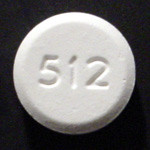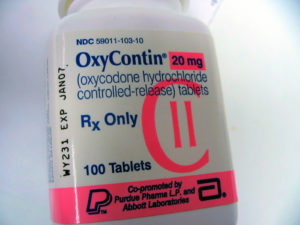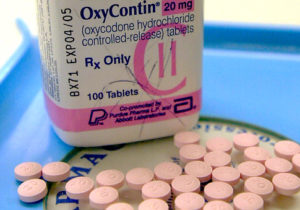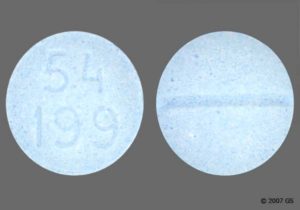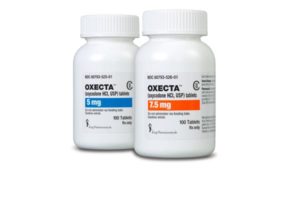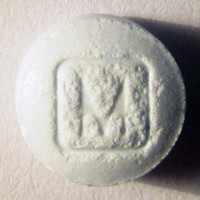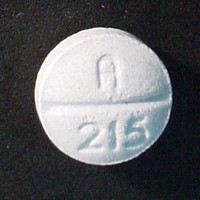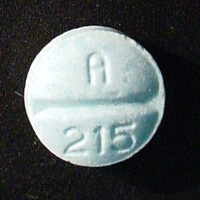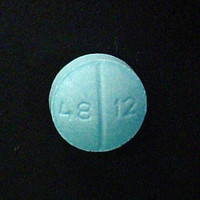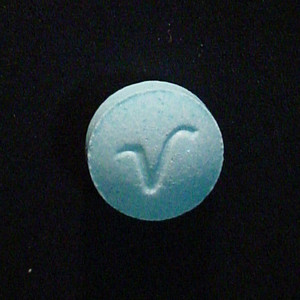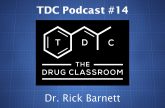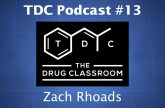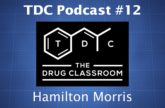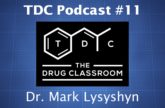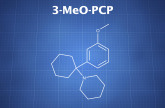Oxycodone is a popular member of the opioid class. It is widely used in medical settings for acute and chronic pain. Outside of those settings, it has long been used recreationally, with its effects compared to morphine and heroin.
The drug is sold either on its own or in combination with acetaminophen (primarily). When acetaminophen is present, the dose must be limited. The general recommendation is to avoid using over 1,000 mg at once or 3,000 mg per day.
An oxycodone overdose can be very dangerous and even deadly, with a notably problematic effect being respiratory depression. It is more risky when combined with other CNS depressants (e.g. benzodiazepines and alcohol.)
Oxycodone = OxyContin; OxyNeo; Percodan; Dihydrohydroxycodeinone; Percocet; Roxicodone; Eukodal; Dihydrone; Oxycodeinone
PubChem: 5284603
Molecular formula: C18H21NO4
Molecular weight: 315.369 g/mol
IUPAC: (4R,4aS,7aR,12bS)-4a-hydroxy-9-methoxy-3-methyl-2,4,5,6,7a,13-hexahydro-1H-4,12-methanobenzofuro[3,2-e]isoquinoline-7-one
Dose
Oral (medical)
Chronic range: 10 – 300 mg (normally under 50 mg)
Acute IR: 5 mg every 6 hours
Oral (IR)
Light: 2.5 – 10 mg
Common: 10 – 25 mg
Strong: 25 – 30 mg
Intranasal
Light: 2.5 – 5 mg
Common: 5 – 15 mg
Strong: 15 – 25 mg
Timeline
Oral (IR)
Total: 4 – 6 hours
Onset: 00:10 – 00:30
Oral (CR)
Total: Up to 12 hours (often 6 – 10 hours)
Onset: ~ 00:30
Intranasal
Total: 3 – 5 hours
Onset: 00:01 – 00:10
Experience Reports
Test Results
References
(2016) Opioid Pharmacology and Pharmacokinetics
(2016) Agonism at delta-opioid receptor contributes to the antinociceptive effect of oxycodone in mice
(2015) An update on oxycodone: lessons for death investigators in Australia.
(2014) Oxycodone for neuropathic pain and fibromyalgia in adults.
(2013) Oxycodone overdose causes naloxone responsive coma and QT prolongation.
(2013) FDA ban of generic oxycodone calls into question Health Canada’s approval
(2013) Does the pharmacology of oxycodone justify its increasing use as an analgesic?
(2013) Opioid dose and risk of road trauma in Canada: a population-based study.
(2012) Oxycodone class action lawsuit filed
(2012) A systematic review of randomized trials on the effectiveness of opioids for cancer pain.
(2012) Dependence and addiction during chronic opioid therapy.
(2012) Effect of Abuse-Deterrent Formulation of OxyContin
(2012) Opiate addiction and cocaine addiction: underlying molecular neurobiology and genetics.
(2011) Oxycodone poisoning: not just the ‘usual suspects’.
(2011) Increasing deaths involving oxycodone, Victoria, Australia, 2000-09.
(2011) A systematic review of oxycodone in the management of cancer pain.
(2011) Opioid dose and drug-related mortality in patients with nonmalignant pain.
(2010) Role of oxycodone and oxycodone/naloxone in cancer pain management.
(2010) Long-term opioid management for chronic noncancer pain.
(2010) The effects of CYP2D6 and CYP3A activities on the pharmacokinetics of immediate release oxycodone
(2009) Oxycodone: new ‘old’ drug.
(2009) Pharmacology of oxycodone: does it explain why oxycodone has become a bestselling strong opioid?
(2008) Oxycodone: a review of its use in the management of pain.
(2008) Opioid pharmacology.
(2007) Oxycodone abuse in Texas, 1998-2004.
(2007) How different is oxycodone from morphine?
(2007) Oxycodone: a pharmacological and clinical review.
(2006) Opioid Analgesics and Rates of Fatal Drug Poisoning in the United States
(2006) Opioids for chronic noncancer pain: a meta-analysis of effectiveness and side effects.
(2006) Serotonin syndrome induced by fluvoxamine and oxycodone.
(2005) Oxycodone
(2005) Controlled-release oxycodone-induced seizures.










